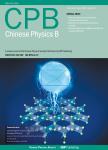A viscous continuum traffic flow model with consideration of the coupling effect for two-lane freeways
A viscous continuum traffic flow model with consideration of the coupling effect for two-lane freeways作者机构:College of AutomationChongqing University
出 版 物:《Chinese Physics B》 (中国物理B(英文版))
年 卷 期:2009年第18卷第9期
页 面:3724-3735页
核心收录:
学科分类:08[工学] 0805[工学-材料科学与工程(可授工学、理学学位)] 0704[理学-天文学] 082302[工学-交通信息工程及控制] 0823[工学-交通运输工程]
基 金:supported by the National High Technoloy Research and Development Program of China (Grant No 511-0910-1031) the National "10th Five-year" Science and Technique Important Program of China (Grant No 2002BA404A07)
主 题:two-lane traffic viscous continuum traffic flow model numerical simulation
摘 要:In this paper, the viscous continuum traffic flow model for a single lane is extended to the traffic flow for two-lane freeways. The proposed model is a higher-order continuum model considering the coupling and lane changing effects of the vehicles on two adjacent lanes. It results from integrating the Taylor series expansion of the viscous continuum traffic flow model proposed by Ge (2006 Physiea A 371 667) into the multi-lane model presented by Daganzo (1997 Transpn. Res. B 31 83). Our proposed model may be used to describe non-anisotropic behaviour because of lane changing in multi-lane traffic. A linear stability analysis is given and the neutral stability condition is obtained. Also, issues related to lane changing, shock waves and rarefaction waves, local clustering and phase transition are investigated through a simulation experiment. The simulation results show that the proposed model is capable of explaining some particular traffic phenomena commonly observable in real world traffic flow.



